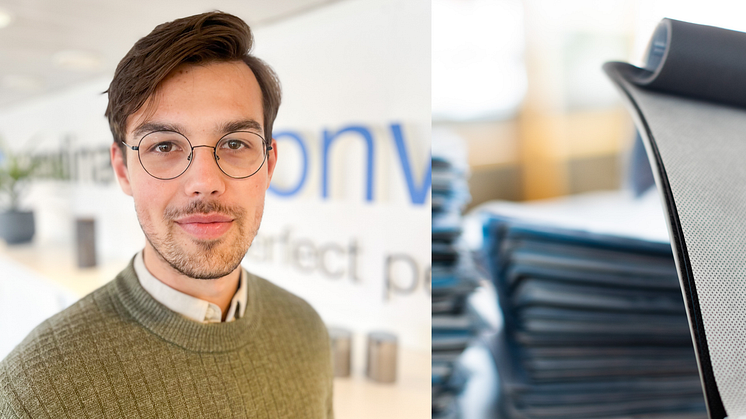
News -
Six ways Scandinavian Nonwoven is increasing its sustainability focus
Over the past six months, Eric Nilsson, Sales & Sustainability Specialist has initiated an increased focus on sustainability and documentation at Scandinavian Nonwoven. The increased focus on climate issues has escalated the market's requirements on sustainable materials, documentation and traceability. Below, Eric summarizes how Scandinavian Nonwoven has increased its sustainability focus.
1. EPD – Environmental Product Declaration
We often develop customized materials for our customers, which means that we often collaborate closely with the customer and specialized consultants to produce an EPD for the material. EPD is an environmental declaration – a standardized document that reports on a product's environmental impact. This includes, among other things, production, construction and recycling. It is a good way to be able to compare the impact between different product options. An environmental product declaration is extensive documentation that must also be reviewed by a third party. We provide our customers with data for EPD.
2. LCA - Life Cycle Analysis
We also support several of our customers in their efforts to compile a Life Cycle Analysis (LCA) for the nonwoven materials that we supply. LCA is about understanding the material's environmental impact throughout its whole life cycle, which includes raw material extraction, manufacturing processes and use for waste management. This also includes energy consumption, transport and emissions.
A life cycle analysis is included when you make a more extensive environmental product declaration (EPD), but a life cycle analysis can also be done independently.
3. Circular materials
Many of our products are used in an environment where they strictly cannot be allowed to decompose over time - for example in the construction industry. This means that it is extra crucial that materials are sustainable and high quality in order to avoid unnecessary renovations. We have extensive experience in delivering materials that comply with strict specifications to guarantee that the material will have a long life cycle.
Since some materials are not degradable, it becomes important to look at circularity instead. That is, the possibility of either recycling or reusing of the material in another product after its life cycle. A common way of doing this is though grinding it to be used as raw material in another product. That possibility exists today for many types of nonwovens. There is also an increased demand for nonwovens made from recycled raw materials, such as PET and PP. Read more about sustainable nonwoven materials here.
4. Energy surplus
We have worked hard to make our own internal processes and production methods more sustainable. The environmental impact from our production in Kristianstad, where we convert (slit and rewind) nonwoven, has primarily been about energy consumption. We have installed a large solar park which now means that we actually produce more energy than we consume each year.
5. Social sustainability
For a long time now, we have had a strong focus on social sustainability. Not only by documenting and following up on occupational injuries and the work environment in our own operations, but we have also drawn up a clear code of conduct (Code of Conduct) for our suppliers. We regularly visit all manufacturers we work with and monitor compliance and working conditions.
In cases where our customers have had their own Codes of Conduct for subcontractors, we have always been able to comply with these and note that our own is often more far-reaching.
- Transportation
As a lot of nonwoven production takes place outside of the Nordic countries. We have worked hard to expand our supplier network in Europe to offer our customers European-made material to reduce the climate impact that long-distance transport entails.
We offer Scandinavia’s largest range of nonwoven materials, and in many cases help our customers develop customized materials suited to their specific needs. Visit our website to learn more. At the website you can order samples.

